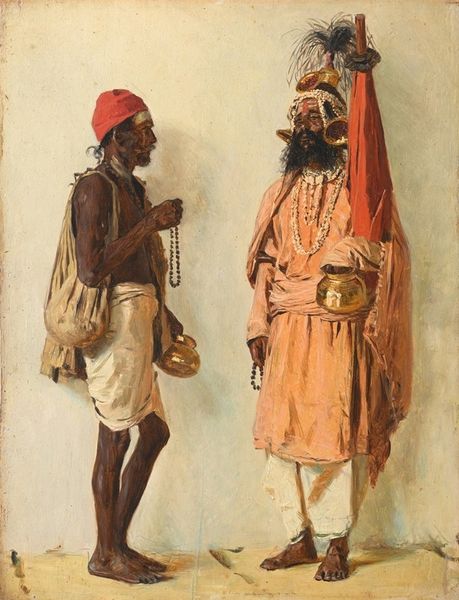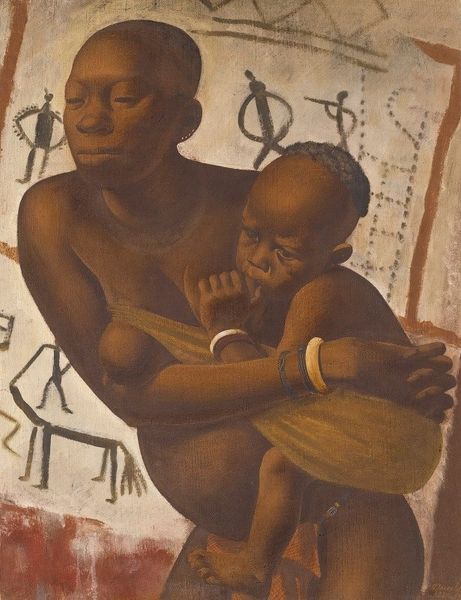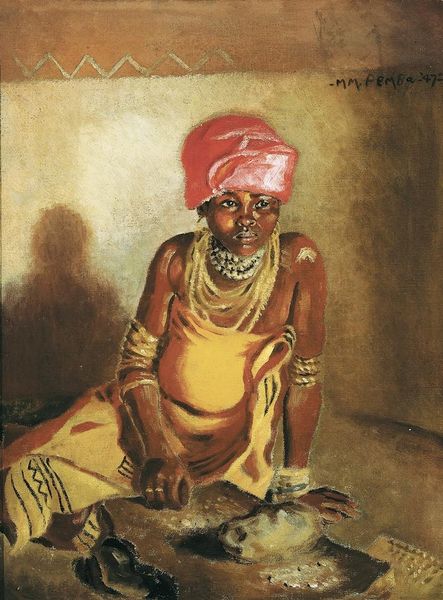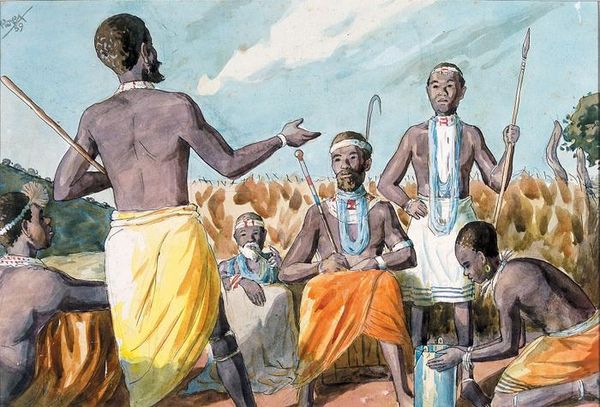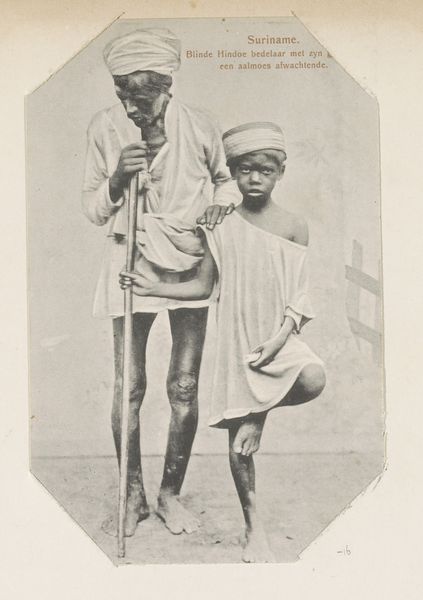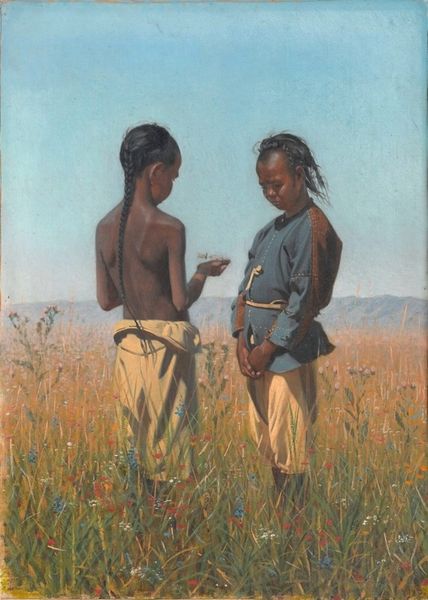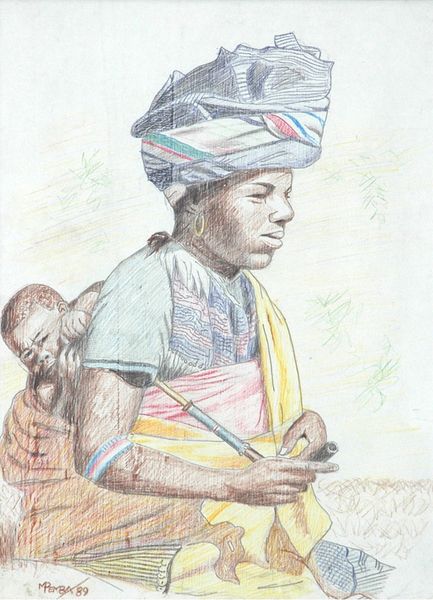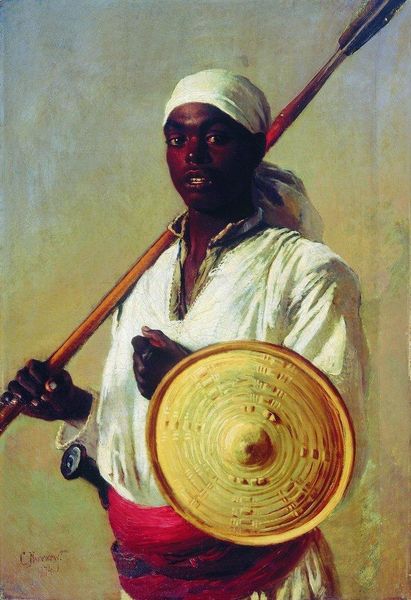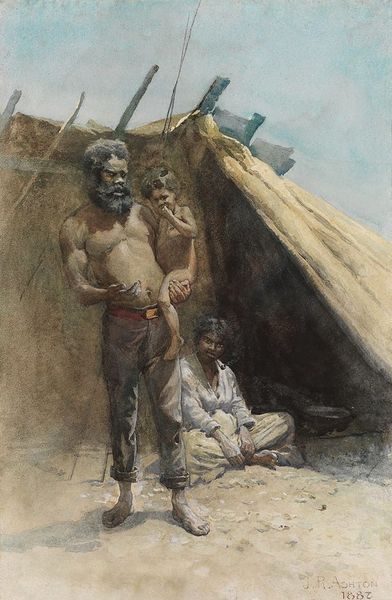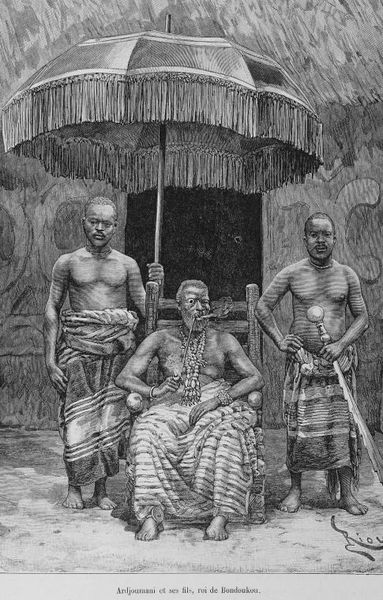
painting, oil-paint
#
portrait
#
painting
#
oil-paint
#
oil painting
#
male-portraits
#
orientalism
#
human
#
painting painterly
#
genre-painting
#
history-painting
#
academic-art
#
portrait art
#
fine art portrait
#
realism
Copyright: Public domain
Editor: So, this is Vasily Vereshchagin's "Fakirs," painted in 1876 using oil paints. There’s a starkness to the image, a quiet intensity as you observe these two figures. How do you interpret this work, especially considering its historical context? Curator: It's a potent example of Orientalism. Vereshchagin, a Russian painter, presents his interpretation of Indian holy men, the fakirs. Consider the power dynamics at play: a Western gaze framing and defining the "exotic" East. The fakir's material conditions – their dress, possessions – are laid bare. Editor: Yes, the visual contrast between the two figures is definitely present; one is standing with rosary beads in hand, and another seated. How can that be understood? Curator: Ask yourself: is this depiction exploitative? Does it perpetuate stereotypes? The figures become representative of a broader group, flattening their individual experiences. Also, notice how the painter emphasizes the material destitution, potentially reinforcing notions of the “backwardness” of the East that colonizers used to rationalize dominance. What does it mean for Vereshchagin, a man of privilege from a colonizing power, to represent these subjects? Editor: I hadn’t thought about it so explicitly, but that perspective shifts the whole reading for me. It’s no longer just a portrait, but a statement about power. Curator: Exactly. We have to unpack those layers. By questioning the artist’s position, their motives, and the impact of their work, we can begin to address how such representations contribute to larger systems of oppression. It prompts questions around who has the right to represent whom and what responsibility comes with that. Editor: So, analyzing the art through a lens of historical context encourages reflection on identity, power, and social structures. Curator: Precisely! We begin to consider art as a vehicle for social commentary and potentially even social change.
Comments
No comments
Be the first to comment and join the conversation on the ultimate creative platform.
